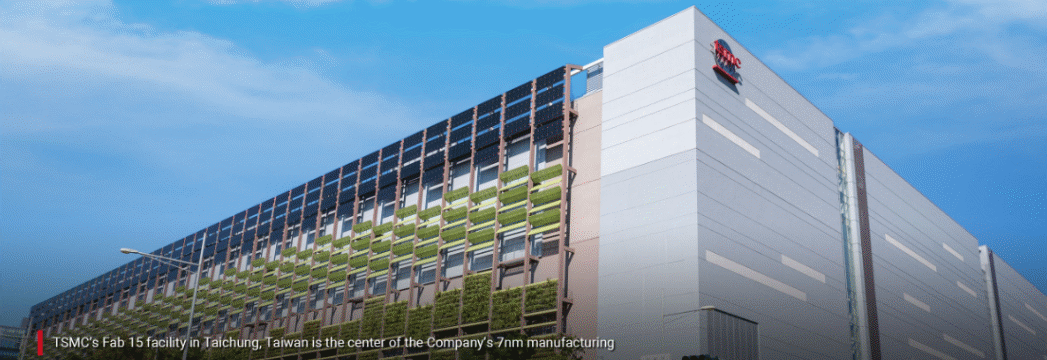By Michael Roberts
Taiwan has a general election on Saturday. The international media has highlighted the election as an important geopolitical pivot – namely, if the current incumbent government party, the Democratic Progressive Party (DPP), wins the presidency and legislature and continues its call for formal (not just de facto) independence from mainland China, that will mean intensified attacks on Taiwan by Beijing, perhaps leading to military conflict.
But this obsession with the US-China geopolitical conflict that so concerns the imperialist powers is not the main issue for Taiwanese voters in this election: standards of living and the state of the Taiwanese economy are more to their point.
Mainland China under Xi continues to claim that Taiwan is part of China and unification must take place at some point. The US and its allies in the region continue with the formal paper agreement with China that China and Taiwan are one country but with two states. But in reality, the US is buttressing Taiwan’s military and financial resources to ensure continued separation in order to weaken Beijing and sustain Taiwan’s pivotal role in providing semi-conductors and hi-tech components for the West.
Latest polls suggest a win for the DPP
The DPP currently has a majority in the legislature with 63 seats. Some 19.5 million Taiwan citizens are eligible to vote out of a population of more than 23 million. Voters must be aged 20 or older. The latest polls suggest that the DPP will win again from the Kuomintang or KMT, the nationalist Chinese party composed of those that fled the mainland after the 1949 revolution and took over control of the island from the indigenous population. The KMT is supposedly more inclined to work with Beijing and not disturb the status quo, although its presidential candidate said this week that the US was Taiwan’s ally and he would aim to strengthen even more the country’s defences against the supposed threat from across the straits.
It’s true that the island’s population increasingly sees its identity as Taiwanese rather than with mainland China, but that does not mean that the majority are in favour of outright provocation to Beijing. Most want things to stay as they are politically.
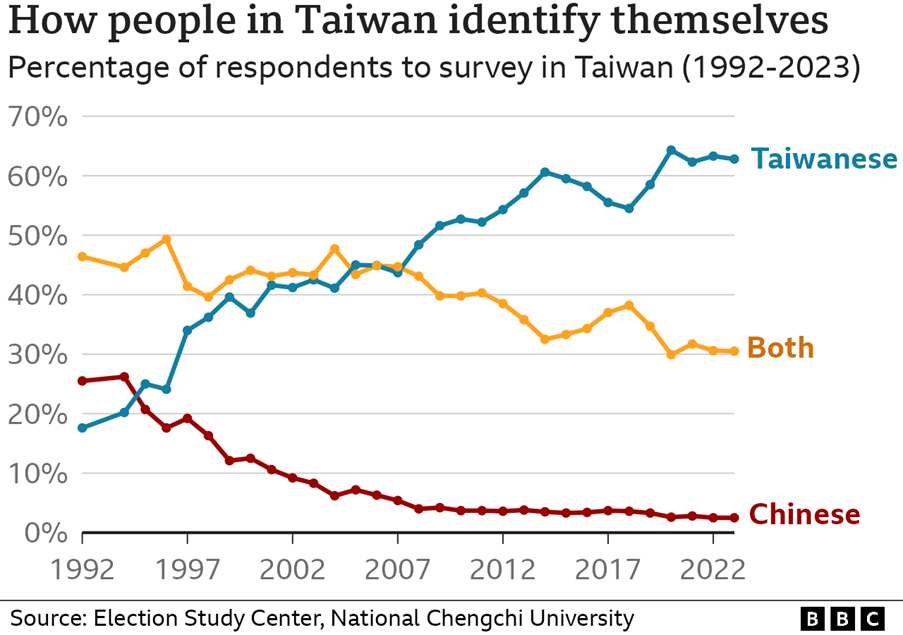
What mostly concerns the bulk of Taiwan households is the state of the economy. Tiny Taiwan is one of what used to be called the Asian tigers (Hong Kong, Singapore, Korea, Taiwan), which industrialised fast in the late 1980s onwards at the same time as China began its economic march upwards. Taiwan’s growth was based on huge inward investment from the US, using very cheap labour at home, policed by a military regime under the KMT for many decades (martial law was not ended until 1987 and there were no elections until 1996); while the US built up Taiwan’s military power as part of the strategy of surrounding China.
Growth of high technology industries but is Taiwan a “one trick pony”?
Starting off as a poverty-stricken, resource-poor, technologically backward nation in 1949, Taiwan has now become the hub of a global production network in many high-tech industries with increasing significance in the world economy. Per-capita GDP at about $33,000 is more than double that in the Chinese mainland. Semiconductor and other electronic products account for over 70% of Taiwan’s total exports or 40% of its GDP.
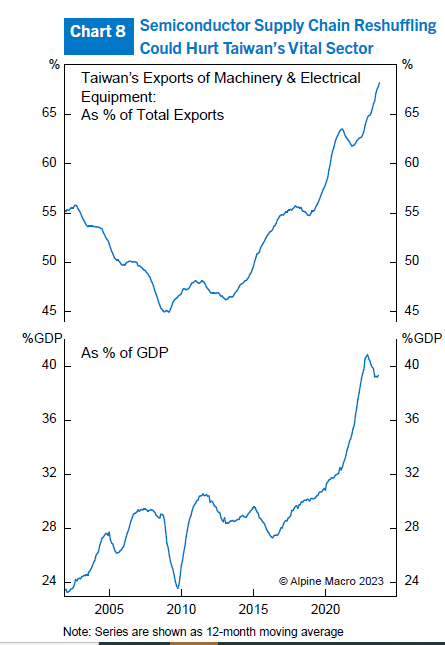
But here is the problem. Taiwan has become a ‘one trick pony’ based on tech components, like Russia depends on energy and mineral resources exports. And Taiwan’s position as the semi-conductor king is now under threat. Despite a highly competitive tech sector, Taiwan’s ascendance on the value-added production ladder is stalling. And low value-added products, such as textiles, base metals, and chemical products still account for half of Taiwan’s industrial production, largely unchanged in the past two decades.
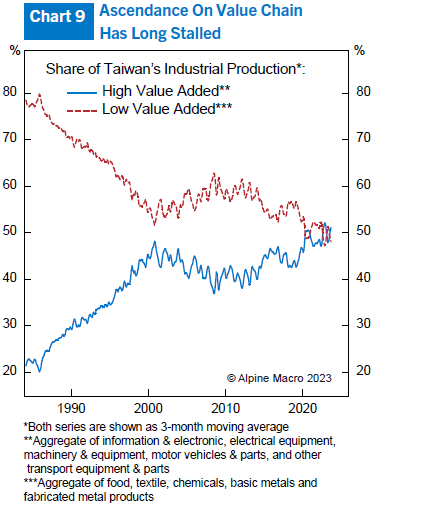
Huge investment in machinery and tech components over labour has led to a long-term fall in the profitability of capital (a la Marx).

Semiconductor manufacture industry and pressure from the US
The irony is that US domination now means not more investment domestically, but instead a demand that Taiwan’s key companies relocate to the US or elsewhere so that China cannot get them. Taiwan Semiconductor Manufacturing Corp (TSMC) is the world’s largest supplier of computer chips, providing more than 90% of leading-edge chips. It still operates two plants in China, in Nanjing and Songjiang, making less advanced computer chips. But it has been complying with demands from the United States and other trading partners to restrict exports of equipment and technology for leading edge semiconductors. And it is being forced to shift production to Japan, Germany and Arizona.
This ‘friend-shoring’ threatens to weaken the domestic economy significantly. At the same time, trade and investment between mainland China and Taiwan, so important in the past to Taiwan, is being decimated.
Moreover, the success of Taiwan’s technology sector is not reflected in the rest of the economy or for its non-tech labour force. Outside of the tech sector, productivity growth has been sluggish and growth in the ‘Asian tiger’ has been steadily on a downward trend.
Annual real GDP growth
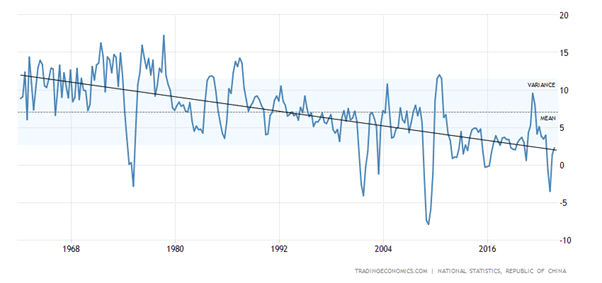
And real wages of non-tech manufacturing and service jobs have barely increased since the early 2000s.
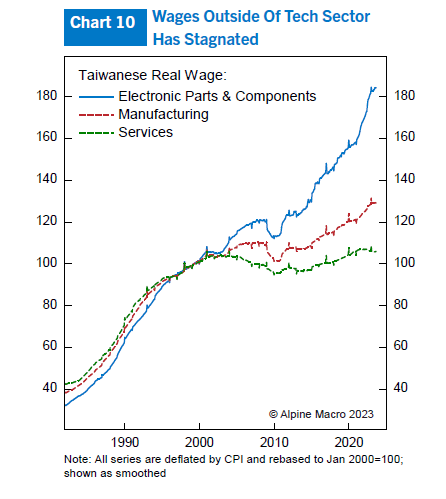
TSMC median annual wages are $56,264, but in other sectors the average annual salary for workers in those sectors averaged less than $12,000. And wages in these sectors have stagnated, while youth unemployment is near all-time highs.
Youth unemployment rate %
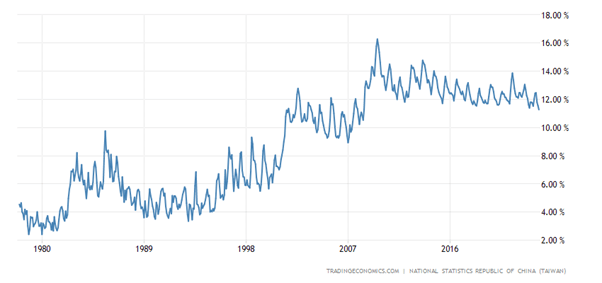
Inequality of incomes and personal wealth remains high, as it does in most capitalist economies. The highest-earning 20% get over six times the income of lowest earning 20%. The top 1% of wealth holders have 25% of all wealth and the top 1% of income holders get 20% of all income.
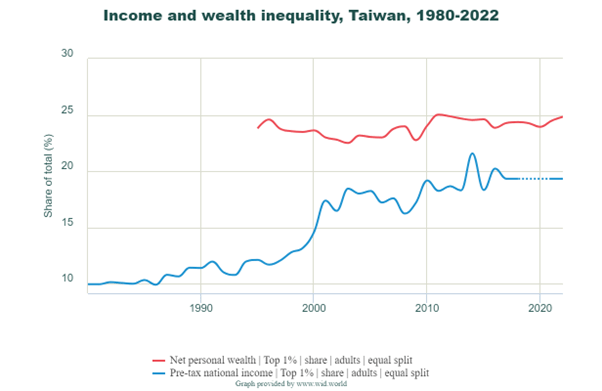
Huge property speculation has led to home prices jumping 50% in the last five years and accelerating, making it impossible for young Taiwanese to find decent accommodation.
House price index
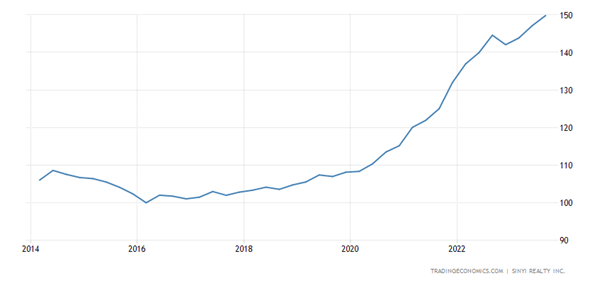
Since the end of the pandemic, which hit Taiwan hard as in many other countries, economic recovery has been weak. Indeed, in 2023, the economy went into recession for several quarters, the poorest performance since the end of the Great Recession in 2009 – revealing that dependence on China’s economy remains high. And real incomes fell by the largest amount since 2016. The DPP government may stand for ‘independence’, but it has not presided over better living standards for its electors.
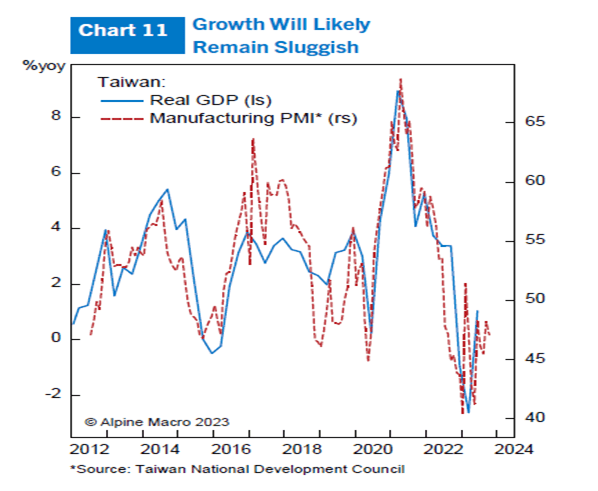
Mainstream forecasters are talking optimistically about “meaningful growth” for this year after the election (around 3% real GDP growth from 1% last year). But that assumes that world trade growth will pick up – pretty unlikely given the expected slowdown in many major economies and the US attempts to weaken China’s trading capability. The threat of an ‘invasion by China’ is probably the least of the worries of Taiwanese voters, despite the media barrage from the West and from Taiwan’s politicians.
From the blog of Michael Roberts. The original, with all charts and hyperlinks, can be found here.

